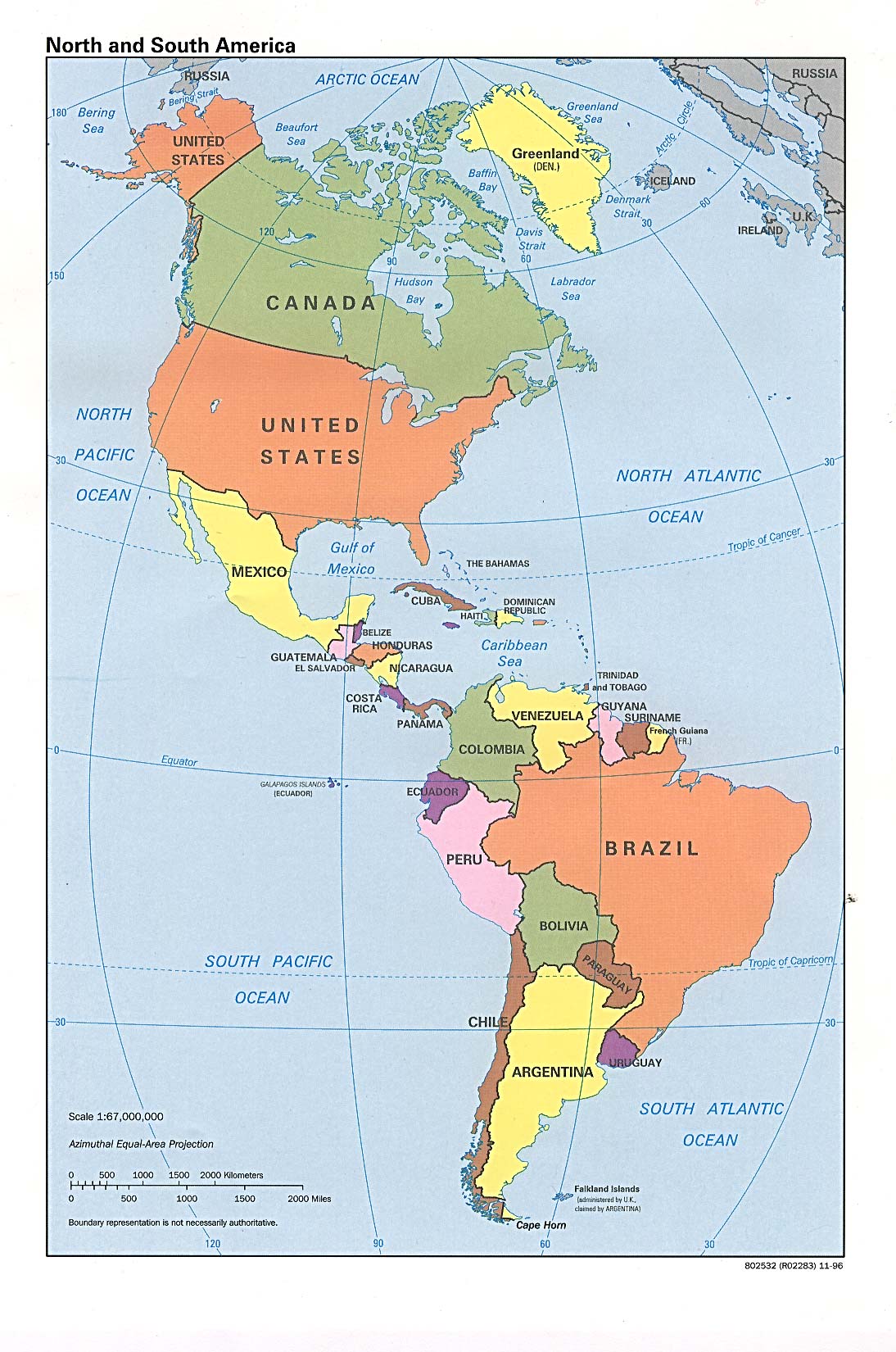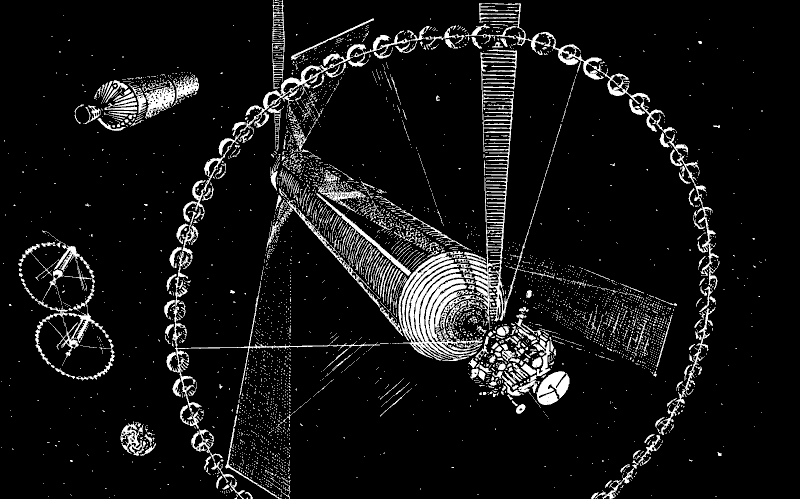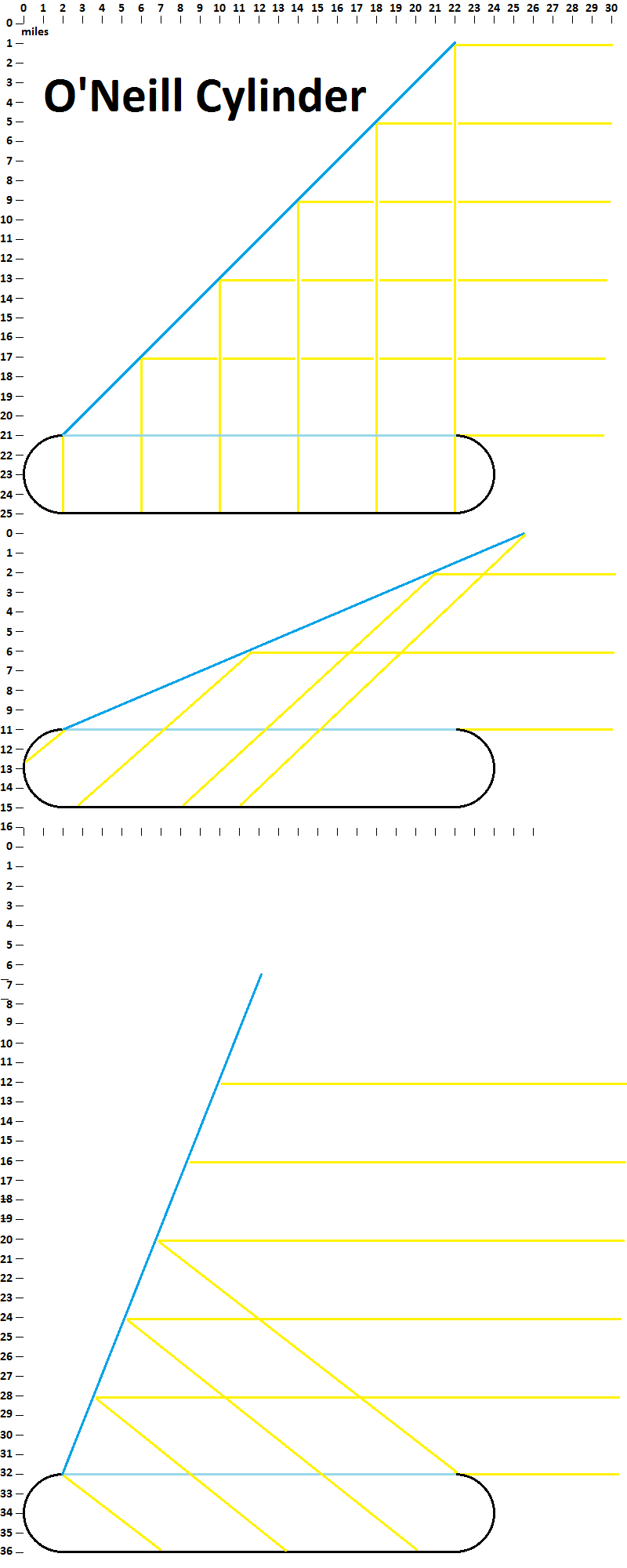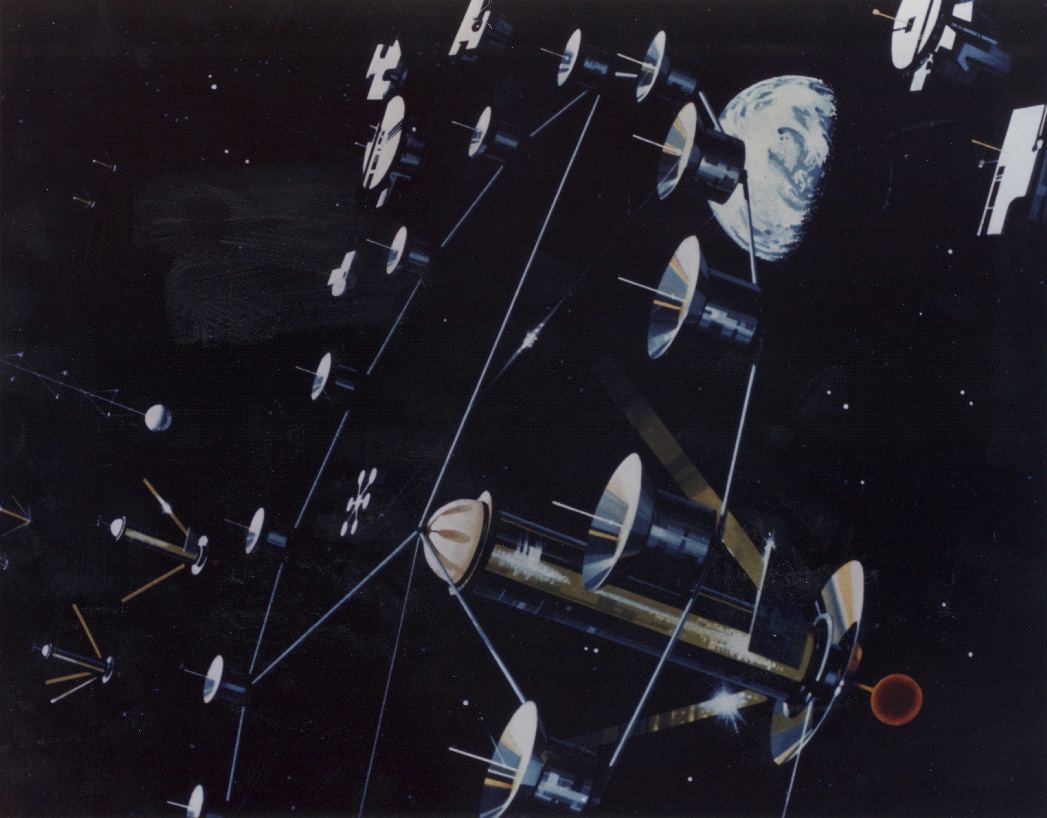Tom Kalbfus
Mongoose
Empire is a space colony set in the mid 22nd century (TL 8) before there was grav plating or the Jump Drive, basically everything rotates for gravity or accelerates, this is a continuation from Merc Cruiser.

This is what I'd be using it with. There is another vehicle that goes with this, it is called a Commuter Sphere, like a Mercenary Cruiser it has a spherical hull, but it is designed to take commuters from one O'Neill Cylinder to another, These Cylinders are often paired and rotate in opposite directions to cancel out the Gyroscopic effect so both can remain pointed at the Sun. A commuter sphere has a cabin full of seats, and it has life support to keep them alive through the short journey from one O'Neill Cylinder to its mate. The Commuter Sphere lies nestled in an inverted bowl-shaped docking port, under the floor of the Southern hemispheric end cap just behind the hinges of the giant primary mirrors (To avoid colliding with them when the sphere is released!) When the sphere is release at the right moment it will continue on a straight line through space between the cylinders matching velocity with the underside of the opposing cylinder and undergoing a 180 rotation in space enroute, to meet up with the docking port of the destination Cylinder and lock in space. The Doors meet, and seal is formed and commuters will egress from the Commuter sphere. It just so happens that a Mercenary Cruiser can also dock with a Commuter Sphere port. The main difference is the Merc Cruiser has a fusion engine, which can be used to get anywhere around the Solar System, while the Commuter Sphere is designed just to make the short trip between cylinders, it has some reaction control thrusters to adjust its journey between the cylinders if necessary, but that is all. Mercenary Cruisers can be used as part of this O'Neill Colony's defense force. I got a name for this particular colony I have in mind, its called "Empire", one Cylinder is called the Metropolis Cylinder the other is called Suburbia. The Metropolis Cylinder is dominated by an island in one of its three valleys, modeled after Manhattan Island, it has tall skyscrapers on it, and a rectangular grid of numbered streets and 12 avenues arranged longitudinally. The Valley with the Island is called "Manhattan" the other two are called "Queens", and "Jersey". The Suburban Cylinder has three valleys modeled after Westchester, Fairfield, and Orange Counties. The Climate modeled in each Cylinder is that of 45 degrees North on the Eastern coast of North America.

The colony is orbiting in Geosynchronous Orbit above where Columbia, Ecuador, and Peru meet in South America, it is in the same time zone as its terrestrial counterpart, New York City, and it uses Eastern Standard time for its mirror movements with day lengths that are seasonally adjusted to reflect different seasons of the Earth. Metropolis and Suburbia experience opposite seasons from each other.
This is from the other thread Tech Level 8 Solar System:
This is the Island Three or O'Neill Cylinder as its often called.

This will give a sense of the scale, and how the Sun appears to move as the day advances.

The end of the mirror experiences 13.5-Gs in the bottom diagram, obviously the mirrors have to be made of very strong and light weight material, probably carbon composites with a coat of aluminum on it.
The main difference between Empire and these illustrations, is that the agro cylinder ring has a radius of 36 miles, so that it is wider than the mirrors when fully extended. The agro cylinder ring rotates ever so slightly to keep the ring taught, however within the agro cylinders, this is hardly felt at all as each agro cylinder measures a mile in circumference and rotates individually for gravity within.
wbnc said:Tom Kalbfus said:Much as water towers were mistaken for "invading Martians" during the 1938 radio play by Orson Welles "War of the Worlds!" However shooting one of those LNG tanks would be much more disastrous than shooting a water tower!
I plan on using a version of the Merc Cruiser for my tech level 8 Solar System, it is one of the few ships who's deck plans are laid up in the direction of its acceleration.
The original Broadsword Class Mercenary Cruiser
Origin: Third Imperium
Tech Level: 12
Size: 800 tons
Jump: J-3
Thrust: 3-G
Hardpoints: 8
Cargo: 80 tons
Crew: 8
Passengers: 11 High/Med 0 Low
Cost: MCr285
My Mercenary Cruiser
Origin: The United States of America
Tech Level: 8
Size 800 tons
Jump: None
Thrust: 3-G for 7 hours (21 G-Hours), using 30% of the ship's hull volume in reaction mass.
Hardpoints: 8
Cargo: to be determined
Crew: 8
Passengers: 11 High/Med 11 Low
Cost: To be determined
I added some low berths, the ship can run on automatic, and the high G maneuvering wouldn't matter to people in low berths. For a more comfortable Journey, this Merc Cuiser can accelerate for a total of 21 hours at 1-G, this can get you anywhere in the Solar System.
depends on what you are shooting it withthe average pistol or light rifle will just plink off those things.Lucky for everyone....Some people in Louisiana will shoot at anything.
i like the idea of yer Ship. Not bad for in system travel. In reality, a 1G ship is not at all slow for getting around a star system. especially if it can burn its drives for hours instead of minutes.
A ship with low berths for passengers and crew , with a two or three man duty watch is a concept I like to use for low tech scenarios. it gives the Ref a chance to do some sneaky plot stuff while the party is on ice. such as waking up and finding the watch crew dead, or missing.

This is what I'd be using it with. There is another vehicle that goes with this, it is called a Commuter Sphere, like a Mercenary Cruiser it has a spherical hull, but it is designed to take commuters from one O'Neill Cylinder to another, These Cylinders are often paired and rotate in opposite directions to cancel out the Gyroscopic effect so both can remain pointed at the Sun. A commuter sphere has a cabin full of seats, and it has life support to keep them alive through the short journey from one O'Neill Cylinder to its mate. The Commuter Sphere lies nestled in an inverted bowl-shaped docking port, under the floor of the Southern hemispheric end cap just behind the hinges of the giant primary mirrors (To avoid colliding with them when the sphere is released!) When the sphere is release at the right moment it will continue on a straight line through space between the cylinders matching velocity with the underside of the opposing cylinder and undergoing a 180 rotation in space enroute, to meet up with the docking port of the destination Cylinder and lock in space. The Doors meet, and seal is formed and commuters will egress from the Commuter sphere. It just so happens that a Mercenary Cruiser can also dock with a Commuter Sphere port. The main difference is the Merc Cruiser has a fusion engine, which can be used to get anywhere around the Solar System, while the Commuter Sphere is designed just to make the short trip between cylinders, it has some reaction control thrusters to adjust its journey between the cylinders if necessary, but that is all. Mercenary Cruisers can be used as part of this O'Neill Colony's defense force. I got a name for this particular colony I have in mind, its called "Empire", one Cylinder is called the Metropolis Cylinder the other is called Suburbia. The Metropolis Cylinder is dominated by an island in one of its three valleys, modeled after Manhattan Island, it has tall skyscrapers on it, and a rectangular grid of numbered streets and 12 avenues arranged longitudinally. The Valley with the Island is called "Manhattan" the other two are called "Queens", and "Jersey". The Suburban Cylinder has three valleys modeled after Westchester, Fairfield, and Orange Counties. The Climate modeled in each Cylinder is that of 45 degrees North on the Eastern coast of North America.

The colony is orbiting in Geosynchronous Orbit above where Columbia, Ecuador, and Peru meet in South America, it is in the same time zone as its terrestrial counterpart, New York City, and it uses Eastern Standard time for its mirror movements with day lengths that are seasonally adjusted to reflect different seasons of the Earth. Metropolis and Suburbia experience opposite seasons from each other.
This is from the other thread Tech Level 8 Solar System:
This is the Island Three or O'Neill Cylinder as its often called.

This will give a sense of the scale, and how the Sun appears to move as the day advances.

The end of the mirror experiences 13.5-Gs in the bottom diagram, obviously the mirrors have to be made of very strong and light weight material, probably carbon composites with a coat of aluminum on it.
The main difference between Empire and these illustrations, is that the agro cylinder ring has a radius of 36 miles, so that it is wider than the mirrors when fully extended. The agro cylinder ring rotates ever so slightly to keep the ring taught, however within the agro cylinders, this is hardly felt at all as each agro cylinder measures a mile in circumference and rotates individually for gravity within.

